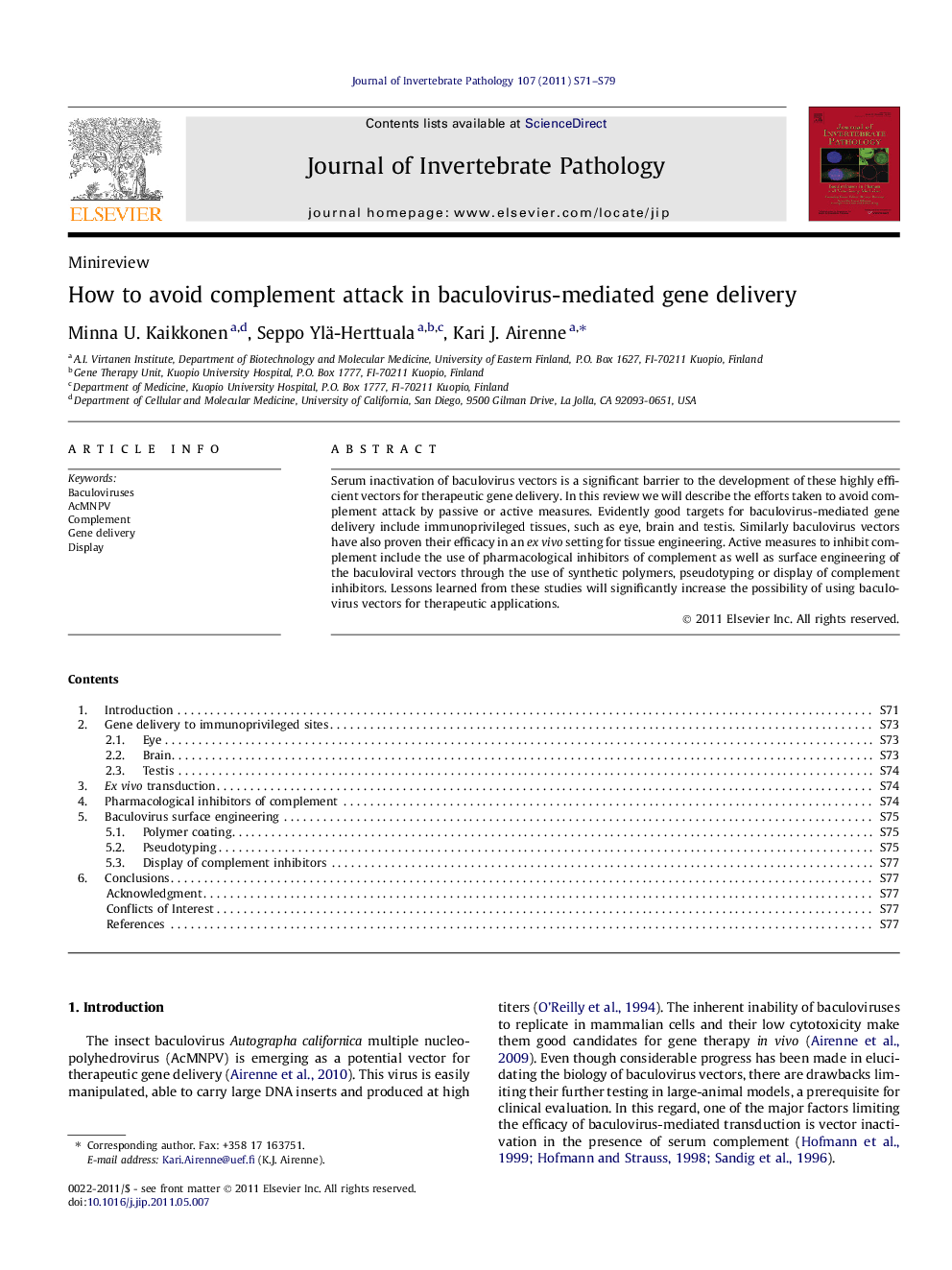| Article ID | Journal | Published Year | Pages | File Type |
|---|---|---|---|---|
| 4557947 | Journal of Invertebrate Pathology | 2011 | 9 Pages |
Serum inactivation of baculovirus vectors is a significant barrier to the development of these highly efficient vectors for therapeutic gene delivery. In this review we will describe the efforts taken to avoid complement attack by passive or active measures. Evidently good targets for baculovirus-mediated gene delivery include immunoprivileged tissues, such as eye, brain and testis. Similarly baculovirus vectors have also proven their efficacy in an ex vivo setting for tissue engineering. Active measures to inhibit complement include the use of pharmacological inhibitors of complement as well as surface engineering of the baculoviral vectors through the use of synthetic polymers, pseudotyping or display of complement inhibitors. Lessons learned from these studies will significantly increase the possibility of using baculovirus vectors for therapeutic applications.
Graphical abstractBaculovirus constructs developed to evade the complement attack include (A) chemical modifications with polyethylene glycol (PEG) or coating with polyethylenimine (PEI), (B) pseudotyping with vesicular stomatitis virus G protein (VSV-G) or VSV-G membrane anchor ectodomain (VSV-GED), (C) display of complement regulators such as decay accelerating factor (DAF), factor H like protein 1 (FHL-1), C4 binding protein (C4BP) and membrane cofactor protein (MCP) by fusing their functional domains to GP64 or VSV-GED.Figure optionsDownload full-size imageDownload as PowerPoint slideHighlights► Baculoviruses are efficient tools for in vitro and ex vivo gene delivery. ► Serum inactivation, however, limits therapeutic in vivo applications. ► Complement attack can be avoided by using drugs or surface engineered viruses. ► Inactivation can also be avoided by targeting immunopriviledged tissues.
